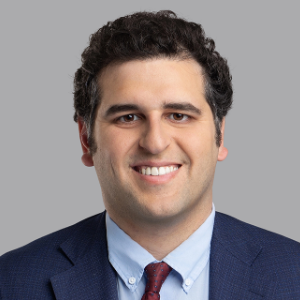Concussions have often been described as being a silent epidemic: ‘silent’ because they often go unrecognized, and an ‘epidemic’ because they cause widespread disability and morbidity in the general population.
Thankfully, the public is beginning to understand that a ‘mild’ traumatic brain injury can still have major consequences. From the fallout of the concussion scandal in the National Football League to the tragedy that inspired Rowan’s Law, people who have suffered from the terrible effects of this traumatic brain injury are using their voices to push for better education, more awareness, and stronger safety protocols.
Still, many people do not fully appreciate just how debilitating prolonged post-concussion symptoms can be until they experience them first-hand.
In this blog post, I outline how the medical community defines concussions and post-concussion syndrome, note how frequently these injuries occur, and provide tips on how people can manage post-concussion symptoms.
What are concussions and post-concussion syndrome (PCS)?
If a person sustains a bump, violent jolt, or a blow to their head, they may suffer a mild Traumatic Brain Injury (mTBI) known as a concussion. Research suggests motor vehicle accidents, sports injuries and falls contribute to the vast majority of concussions.
Head trauma that bruises blood vessels and/or stretches nerves may result in altered brain chemistry and temporarily cause abnormal brain function leading to a variety of symptoms.
Headaches are the most common symptom associated with concussions. Other frequently occuring symptoms include:
- Confusion/brain fog
- Sleepiness/drowsiness
- Light sensitivity
- Difficulty paying attention, concentrating or comprehending
- Nausea or vomiting
- Dizziness or feeling light-headed
- Problems with balance
- Altered vision (double vision or blurred vision)
- Ringing ears
- Altered sleep patterns
- Sadness or depression
- Anxiety, nervousness, irritability
- Memory loss or forgetfulness
- Infants or young children may also present with altered eating/nursing habits, increased fussiness or prolonged periods of crying, and blank stares
A person does not need to lose consciousness to sustain a concussion, and some people who suffer this injury may not be aware that the symptoms they are experiencing are related to an mTBI.
While post-concussion symptoms normally resolve within two to three weeks, a person with symptoms lasting longer than four weeks may be diagnosed as having post-concussion syndrome (PCS) or persisting symptoms after concussion (PSAC). If symptoms have not resolved within a longer time span (three months to a year depending on a medical practitioner’s judgement), a patient may be diagnosed with persistent post-concussive symptoms (PPCS).
Unfortunately, universally agreed upon definitions of PCS and PPCS remain elusive. Medical literature differs in establishing what number of symptoms (and their duration) should be used for clinical purposes.
Prolonged symptoms and risk factors associated with PCS
Sustaining a single concussion will usually not result in a permanent injury. However, certain risk factors increase the odds that a person will experience prolonged symptoms and/or suffer permanent brain damage.
You are more likely to experience PCS if you are:
- Young (ages 8-18, with teenagers considered to be at highest risk)
- Elderly
- A women of any age
- A person with a history of migraines, previous concussions (particularly if symptoms lasted longer than a week), or have an existing disorder (mood, anxiety, learning, seizure)
The nature of the concussion also makes prolonged symptoms more likely. A severe impact, multiple impacts within a short timeframe, multiple early onset symptoms, longer lasting initial symptoms, and major early visual symptoms all put a person at greater risk for PCS.
The Concussion Alliance suggests that individuals with PCS will experience unique clusters of prolonged symptoms that fall into one (or more) of four categories of disturbances:
- Physical
- Cognitive
- Sleep
- Mood/behavioural
When assessing symptoms, specialists generally examine a patient’s history, conduct certain functional tests, and perform conventional imaging of the brain to rule out other injuries.
How common are concussions and how long do symptoms last?
Concussions are a relatively common injury within the general population.
A Statistics Canada study on self-reported concussions revealed that approximately 1.6 percent of the population sustained one or more concussions in 2019 alone. There is a risk that this number may be an underestimation of the true prevalence of this injury. While the median reported recovery time for all participants in this study was 30 days, for women it was double. One-third of respondents reported sustaining a concussion in their lifetime.
As noted earlier, medical experts have yet to come to consensus on how to define PCS. As a result, various studies employing different definitions suggest anywhere from 30 to 90 percent of people who sustain an mTBI will experience PCS three months after injury. About one in six people continue to report symptoms after one year.
What treatment is available for concussions and PCS?
Rest is an absolutely critical component for healing and recovery. While it may be frustrating for people who were very active prior to their concussion to limit their activities, when a concussed person does begin to resume regular activities, experts urge them to be very tentative as they gradually return to normal levels of exertion and duration.
Unfortunately, pressure to return to work prematurely or failure to accommodate a person’s need for a gradual return to duties can be seriously detrimental to their recovery and/or increase the likelihood they will suffer from prolonged symptoms.
Recommended strategies for treating post-concussion symptoms include:
- Getting sufficient, regular sleep (but avoiding naps)
- Avoiding screens
- Taking steps to relax and reduce stress
- Taking over-the-counter medication for headache pain (consult with a pharmacist/physician before taking these medications)
- Avoiding activities in which there is a risk you might hit your head (for example, contact sports)
- Using meditation as a “brain break” in addition to physical rest periods
- Using aids such as ear plugs, polarized glasses, and checklists to reduce stimuli and prevent undue stress
- Gradually increasing activities that require physical exertion over time and being mindful of how activity affects your symptoms
- Keeping a symptom log to understand what stimuli might cause worsening symptoms
If a person is diagnosed with PCS, potential treatments vary depending on symptom clusters. Some treatments to manage symptoms include:
- Prescription medication (for anxiety/depression, high blood pressure and/or seizures).
- Therapy (cognitive, occupational, speech, relaxation, psychotherapy)
- Non-contact aerobic exercise (in consultation with a medical practitioner)
Dealing with invisible injuries and insurers
Sustaining a concussion can profoundly impact your day-to-day life. You may be unable to work for weeks or months; even if a return is possible, you may not be able to perform your duties as normal for some time.
But unlike physical injuries, debilitating “invisible injuries” may be dismissed or discounted by employers and/or insurers who want to limit time spent on short-term or long-term sick leave. That’s unfair.
While insurers have a right to ask people receiving benefits to see their own physicians for assessments, these medical practitioners may not always be in agreement with your doctor on the extent of your disability or what a reasonable amount of time to recover should be. Other practices designed to limit instances of insurance fraud, such as surveillance, can heighten stress at precisely the moment when it should be minimized to promote healing. In some cases, insurance-ordered assessments or surveillance may be used as evidence to support an unjust denial of (or end to) benefits.
If you or a loved one has suffered a concussion in an accident and it’s significantly impacting your life and livelihood, you should know you are not alone. As someone who understands that invisible disabilities can be just as debilitating as physical disabilities, an experienced brain injury lawyer can help you access the benefits and compensation you rightfully deserve.
If you’d like to learn more about your legal rights and options following a concussion-causing accident, contact me for a no cost, no obligation initial consultation. As a personal injury with a track record of getting results for our clients, Howie, Sacks & Henry LLP is ready to help in any way we can. Because at HSH, Hope Starts Here.
















